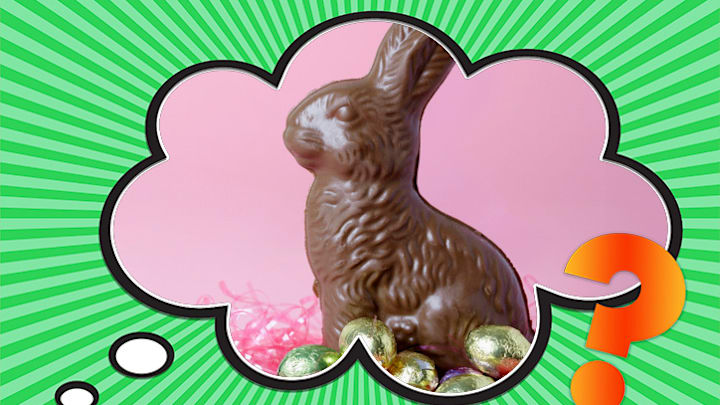As far as holidays go, Easter is second only to Halloween in terms of candy sales. That’s a lot of chocolate bunnies.
Easter—the most spiritually significant holiday of the Christian calendar—has always been heavily associated with symbolic foods, from lamb to egg-rich celebratory breads. Rabbits, however, are not mentioned in the scriptures that recount Jesus’s crucifixion and resurrection. And chocolate, a crop native to South America, was not accessible to the average person in the rest of the world until the mid-1800s. So how did chocolate bunnies come to dominate the Easter basket scene? It’s a thoroughly modern mash-up of commerce, confectionery, and immigration.
The observance of Easter includes some elements adapted from pagan traditions celebrating cycles of new life in the springtime, and one of those is the rabbit, an animal known for its extreme fertility. “Although adopted in a number of Christian cultures, the Easter bunny has never received any specific Christian interpretation,” says the Encyclopedia of Religion.
Pagan Origins of the Chocolate Bunny
Ostara, the Germanic pre-Christian fertility goddess, apparently kept a hare as a sidekick. The word for “Easter” (Ostern, in German) is derived from her name, and her namesake festival was held around the month we now call April. Germans came to embrace the fictional character Oschter Haws (or Osterhause), a rabbit who delivered eggs to children at Easter. Supposedly, the first recorded mention of Osterhause was in the medical notes of a Heidelberg physician in 1684 (he discusses the drawbacks of overeating Easter eggs).
The Easter Bunny Museum in the now-defunct Center for Unusual Museums in Munich showcased examples of 19th century Easter rabbits made of cardboard, wood, or fabric, and some had removable heads to allow for hiding candy inside (these would be the forerunners to chocolate bunnies).

At the same time, Western middle-class consumers began enjoying the chocolatey fruits of progress. “The Industrial Revolution changed chocolate from a costly drink to a cheap solid food,” write historians Sophie D. Coe and Michael D. Coe in The True History of Chocolate. The craft of making the smooth-textured solid chocolate we’re familiar with today requires many steps, and those were not possible without mechanization; the first eating (as opposed to drinking) chocolates appeared in Europe in the mid-1800s.
As eating chocolate became more accessible, Germany rose as a center of molds. Anton Reiche of Dresden, one of the best-known manufacturers, created all sorts of highly detailed tinplate molds for chocolate, and not just in the form of rabbits.
Chocolate Bunnies Come to America
Our friend the chocolate bunny had yet to cross the Atlantic, though. The Oxford Encyclopedia of Food and Drink in America says that “the Pennsylvania Dutch imported the Oschter Haws, or Easter hare, who delivered colored eggs to good children.”
One of the better-known early sightings of chocolate rabbits in America was in 1890, when Pennsylvania shopkeeper Robert L. Strohecker featured a 5-foot chocolate rabbit in his drugstore to attract business at Easter. This became a thing: A 1927 photograph captured two young boys flanking a mighty 75-pound chocolate rabbit in front of Florian’s Pharmacy in St. Paul, Minnesota (the owner happened to be the son of German immigrants). And after that long historical journey, chocolate rabbits of more manageable proportions eventually became an Easter staple.
Have you got a Big Question you’d like us to answer? If so, let us know by emailing us at bigquestions@mentalfloss.com.
A version of this story was published in 2016; it has been updated for 2024.
